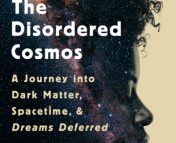This post is part of our series #BlackInAstro. For our cornerstone post, see here. This week, we will be posting a #BlackInAstro story every day for #BlackInAstroWeek.
As we saw in Part 1 of this series, the range of actions taken by physics and astronomy departments in response to #Strike4BlackLives/#ShutDownSTEM in June 2020 has varied tremendously. So what are the key lessons that we’ve learned since last June? In this post, we’ll break down a common pattern in institutional responses and discuss how to address the shortcomings of this approach.
Institutional inertia
Making substantial changes is hard! It is much easier for institutions to maintain the status quo. In response to the growing awareness of anti-Black racism in physics and astronomy, many institutions developed a strategy of appeasement: make some cosmetic changes—by making statements, forming committees or reading groups, and possibly making some relatively small changes—but avoid actually changing anything on a structural level.
Belinda Cheeseboro, a Black PhD student in Physics, describes how this strategy has played out almost to the letter at West Virginia University. “There are some surface-level things happening to keep up appearances,” she says, “but there have been no demonstrated changes that have impacted my experience as a Black grad student attending this university.”
People have noticed this pattern at other institutions. As one graduate student at Michigan State University says, “It’s just a bunch of talk and more of trying to get more URMs into science, but not actually figuring out that this is a systemic issue.” Another researcher, who graduated from an Ivy League, laments the lack of progress in actually hiring or promoting people of color. “My alma mater has hired more sexual harassers than people of color,” they say.
“I sincerely do not know if we’ve had any actual material changes despite many nice-sounding emails about how important inclusion is to NASA,” says a research scientist at NASA Goddard. Last week, the Goddard Equity Task Force was issued an internal award. “I would love to know what they’ve actually done at Goddard in order to earn an award, other than existing.”
Students paving the way
As a result of institutional inertia, students and early-career researchers have driven most of the changes in physics and astro departments. In response to the events of June 2020, grad students wrote statements affirming that Black lives matter, often before—or even in place of—official departmental statements. “After the George Floyd story broke out and protests started happening, our department was silent,” says Cheeseboro. “My best friend and I had to call them out in an email about not making a statement since they have Black students in their department.” Many student statements (like these from Caltech Astro, Yale Physics, and UChicago Astro) included department- and institution-specific action items.
Students at multiple institutions also took the initiative in planning reading groups and discussion events, both during #ShutDownSTEM and afterwards. At some institutions, including Northern Arizona University and Yale, these informal reading groups have participated in local events such as protests, petition signings, and fundraising with local organizations. Grad students of color at the University of Washington went one step further and created an organization called Graduates of Color in Astronomy and Physics “in response to a general lack of departmental support,” says a PhD student.
Many students have noticed that faculty have not taken on the same amount of labor. “Our grads have pushed for myriad institutional changes,” say Texas A&M University grad students. “While some faculty have shown interest in enacting our proposed changes and have even led a few of those efforts, the majority consistently indicate they don’t have the time or will to take leadership—thereby forcing grads and postdocs to be the driving force—resulting in little meaningful progress.”
In some cases, students have felt that faculty have ignored or even pushed back against their efforts. At UC Santa Cruz, representatives of student organizations were not well-received by faculty when they co-signed the demands of the Black Student Union. “The faculty members of the Diversity and Climate Committee in the Physics Department expected me and the other letter co-signer to respond back to the letter we ourselves crafted—on top of the invisible and emotional labor that we, as POC [people of color] undergrads, took on to spearhead changes in our department,” says recent graduate Nicole Man. At the University of Bristol, one PhD student says, “grad student reps have brought up renaming the Physics building in faculty meetings on several occasions, but our comments/concerns are usually brushed off or pushed to another meeting.“
This resistance may be due to a number of factors; some faculty may benefit from maintaining the status quo, while others may simply be less willing to challenge institutional policies. “At UChicago, the institution has a top-down approach to policy changes, and departments tend to follow university directives,” says PhD student Gourav Khullar. “In most cases, faculty are not willing to push for reform against existing policies at the division or university level.”
Some room for improvement
Because institutions can often resist top-down, structural changes, it’s not surprising that so many astronomers and physicists have focused on individual anti-racism efforts. However, these individual approaches have their own drawbacks.
First, anti-Black racism is a systemic problem, not an individual problem. Although it is important for each of us to reckon with our own individual biases, projecting these efforts onto larger systems can be unproductive at best (one NASA employee describes “Listening Sessions” held at Goddard Space Flight Center: “It really is just a ‘white people having feelings at each other’ environment, which I don’t feel to be constructive”) and actively harmful at worst.
Furthermore, when people work as individuals rather than as a collective, they’re more likely to duplicate existing efforts rather than creating something new. For example, Astronomy graduate students started their own anti-racism group before recognizing that other students on campus were forming a university-wide Caltech for Black Lives. “Although we were able to make some changes in our department, the university-wide organization was able to push for more ambitious demands than we would have been able to on our own,” says one PhD student. The focus on dispersed, uncoordinated efforts also makes institutional task forces and committees less effective. “People are not taking advantage of existing resources,” says one NASA research scientist, who has noticed that the groups created by their institute are “being made to replicate each other’s effort, which weakens all of them.”
Finally, when individuals take on the burden of tackling anti-Black racism on their own, it’s easy to burn out. At Yale Physics, for example, participation has waned in a reading group and Slack channel that grad students started last summer. “The Slack channel is still full and used for exchanging info and recs, but the membership of the group dwindled by the end of the summer,” says PhD student Luna Zagorac.
What now?
One year after the physics and astronomy communities went on a Strike for Black Lives, we are still learning how to address anti-Black racism in our scientific spaces. We’ve seen that institutions—and sometimes others who benefit from the status quo, like faculty—can be resistant to meaningful change. As a result, the burden is often placed on the most junior community members to push for these changes, sometimes leading to scattered efforts and burn-out.
Moving forward, we can make progress through collective grassroots responses, focused on actionable goals and deliverable outcomes.
For example, says PhD student and #BlackInAstro organizer Caprice Phillips, one outcome that all university departments can work towards is an equitable admissions process. “I would like to see departments take steps […] to evaluate how they conduct their admissions to make sure they are equitable practices,” says Phillips. “If they feel like they aren’t knowledgeable [enough] to do something like this, I would like to see them bring in consultants/experts like Dra. Nicole Salazar’s company Movement Consulting to review their admission processes for betterment.”
Even with actionable goals to aim for, we must all—students, postdocs, professors, staff, and researchers—be in this for the long haul. Truly working towards justice in academia will require fully overhauling major structures, and it certainly won’t happen overnight. As the Particles for Justice team wrote in their recent anniversary statement: “This is a matter of daily action, and Particles for Justice hopes that the community continues such action without the need for an anniversary or a reminder.”
Edited by: Huei Sears, Gourav Khullar
Featured image credit: Astrobites




